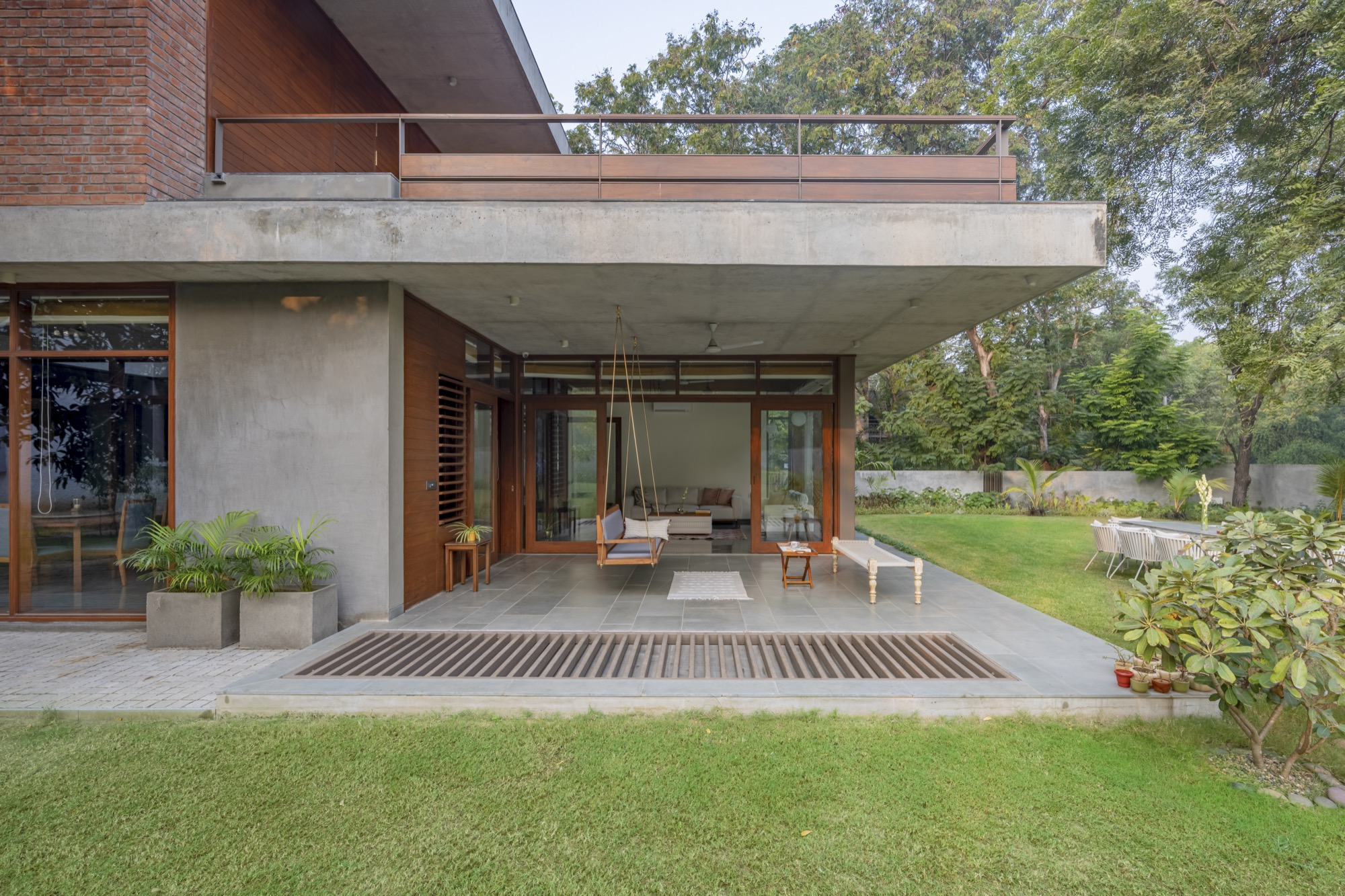
This house for a family of four is a part of a gated community on the outskirts of Ahmedabad. The family earlier had their weekend home on this plot where they have now shifted their permanent residence moving away from the densely populated localities of the city. The idea was to connect the users with the traditional elements of architecture while achieving a contemporary look.
The house is a ground plus one structure along with a basement which is meant for entertainment purpose. The corner towards the garden is opened up by a verandah which has become the family’s favourite relaxation spot. The front bay has a more transparent facade connecting the spaces with the garden. The spaces on the ground floor are formed around a central narrow courtyard reflecting a similar nature to the ones in the pol houses of Ahmedabad. This courtyard stays open to sky for most times of the day and year and consists of an openable fabricated roof to prevent rain and excess heat from coming inside the house.
The ground floor houses the living, dining and kitchen areas along with the parent’s bedroom and daughter’s bedroom. The upper floor has the master bedroom, son’s bedroom and a guest bedroom along with a huge terrace which overlooks the garden and is used for hosting parties. The basement is segregated into two zones the TV area and bar which opens up into a small courtyard which brings in the natural light and air in the basement.
The materials used externally are exposed concrete and brick, wooden paneling and door windows, kota stone flooring creating an earthy palette. Internally there is a play of exposed as well as finished surfaces. All the materials have been locally sourced and have been fused together in a way to keep the spaces connected to the local roots.
Images:



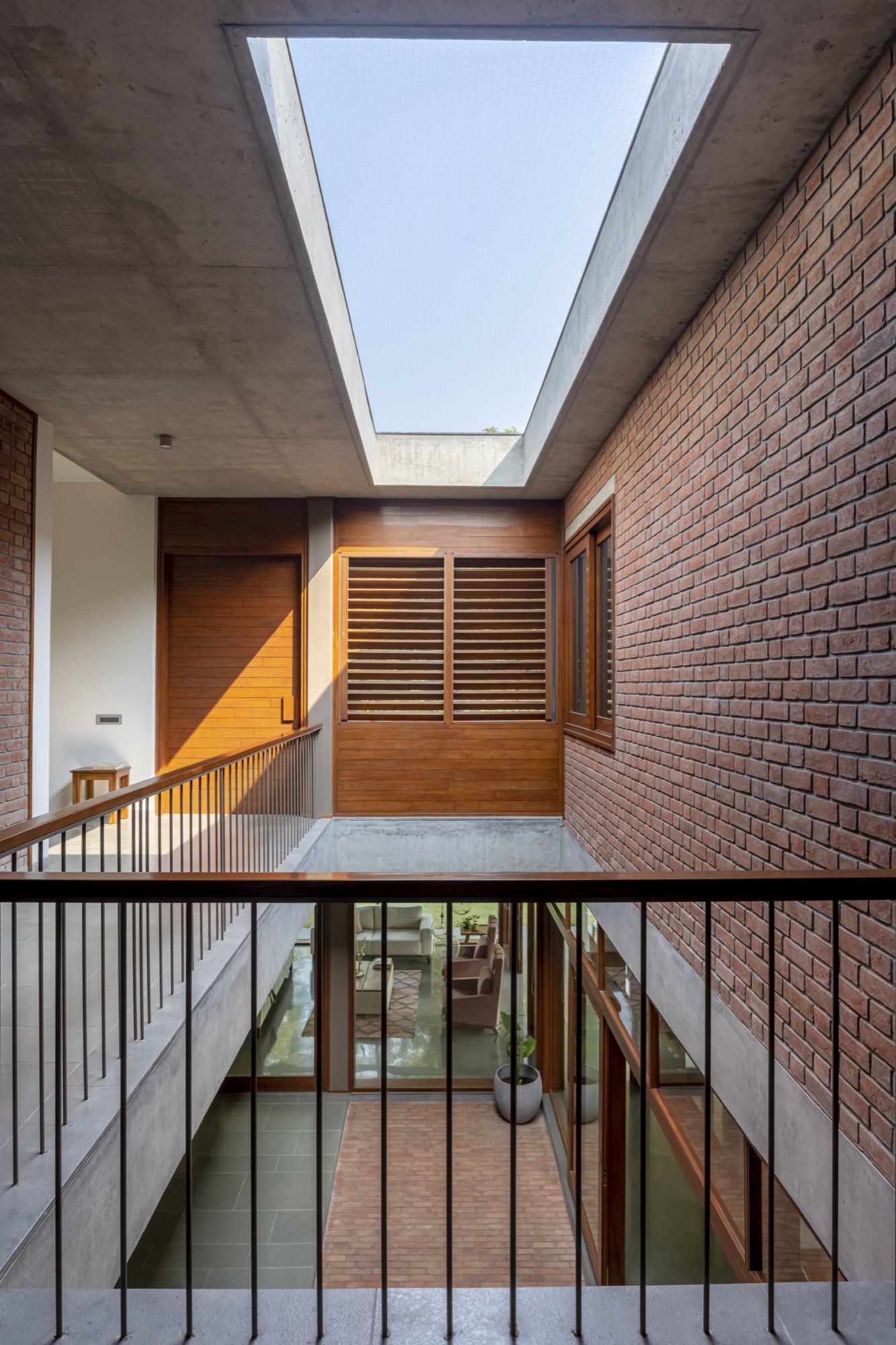


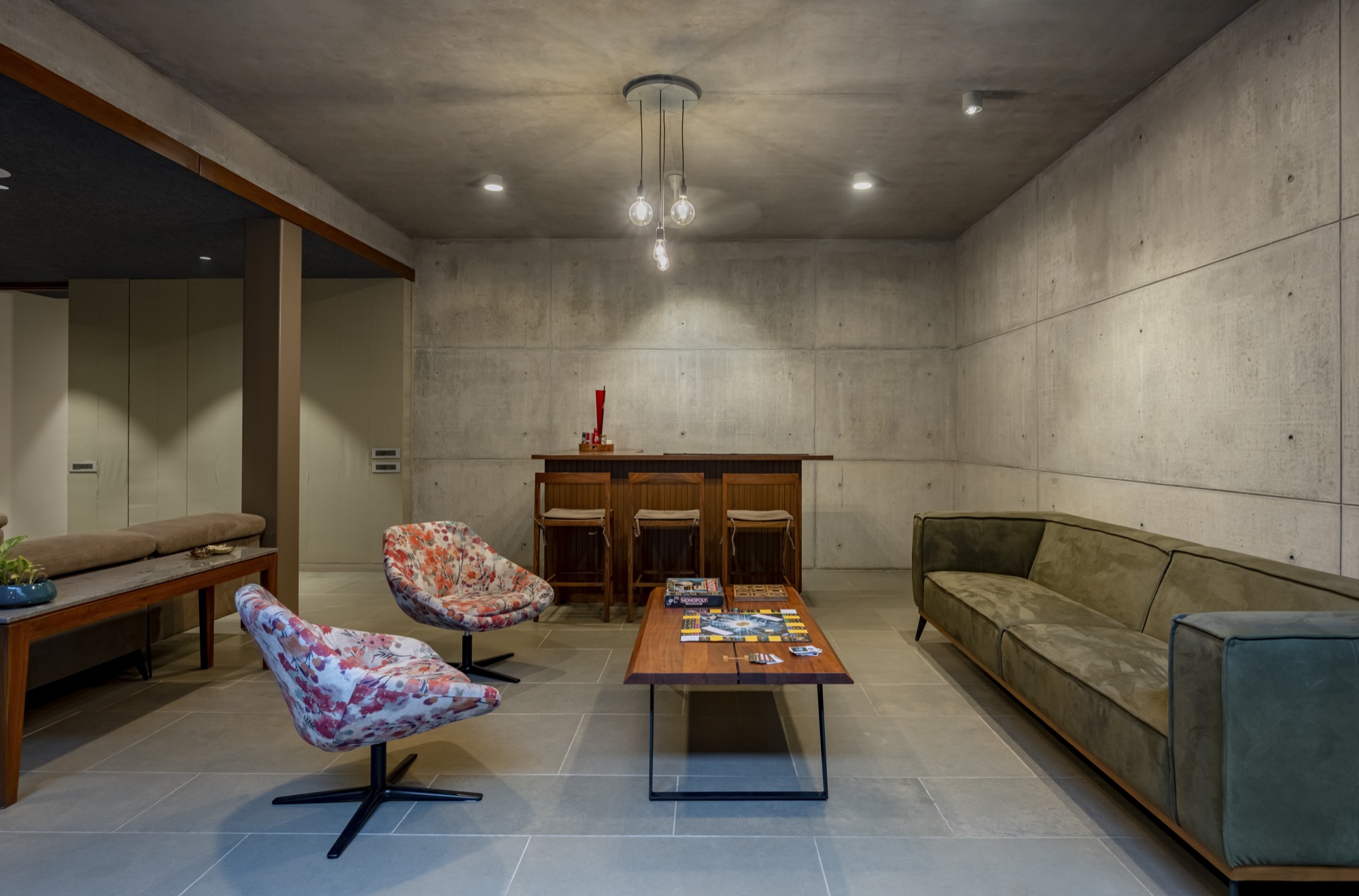
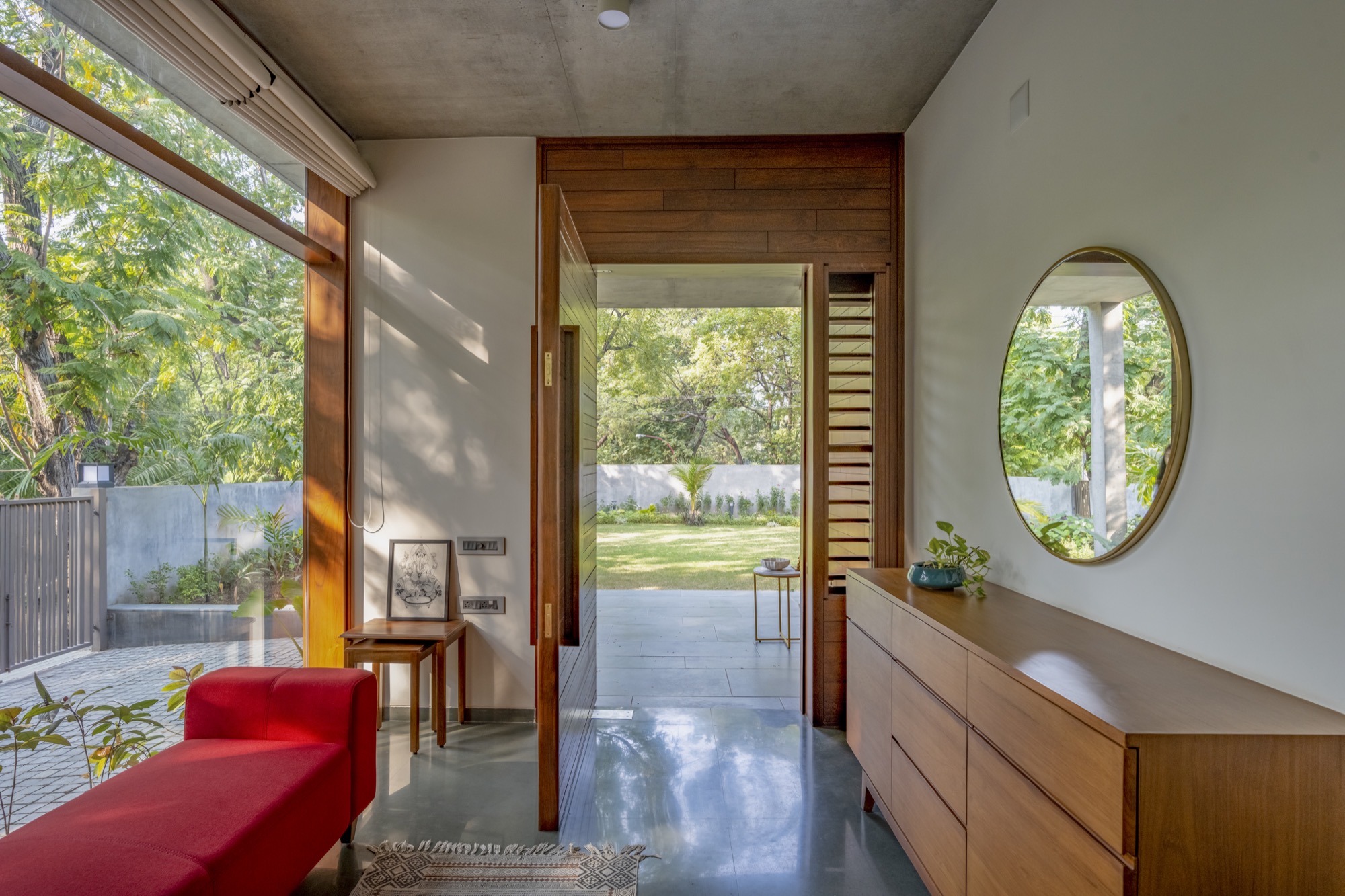

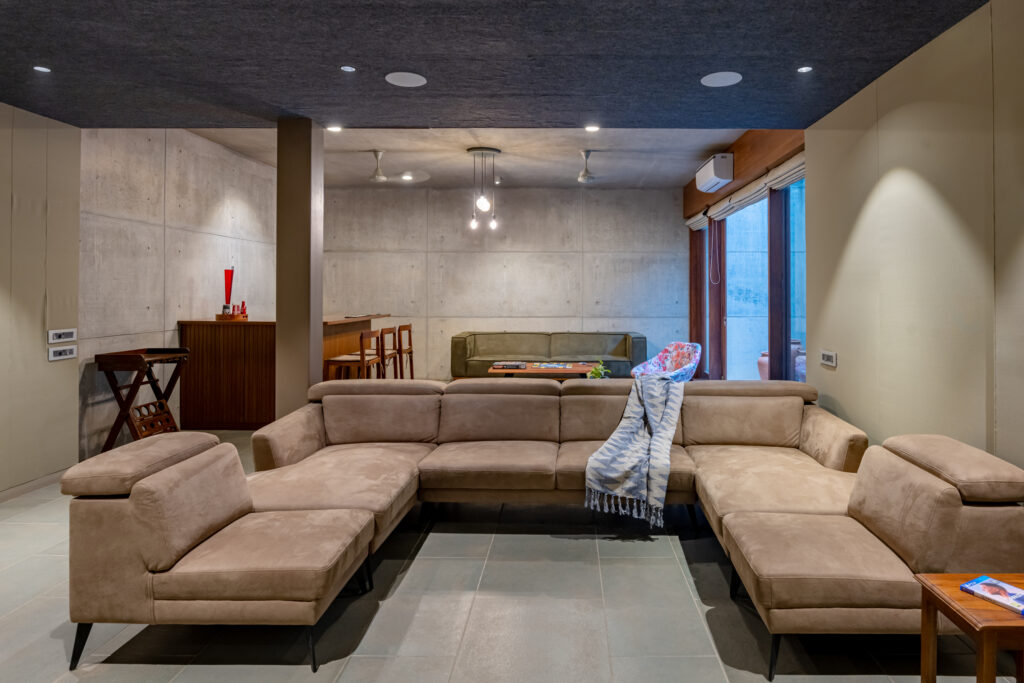
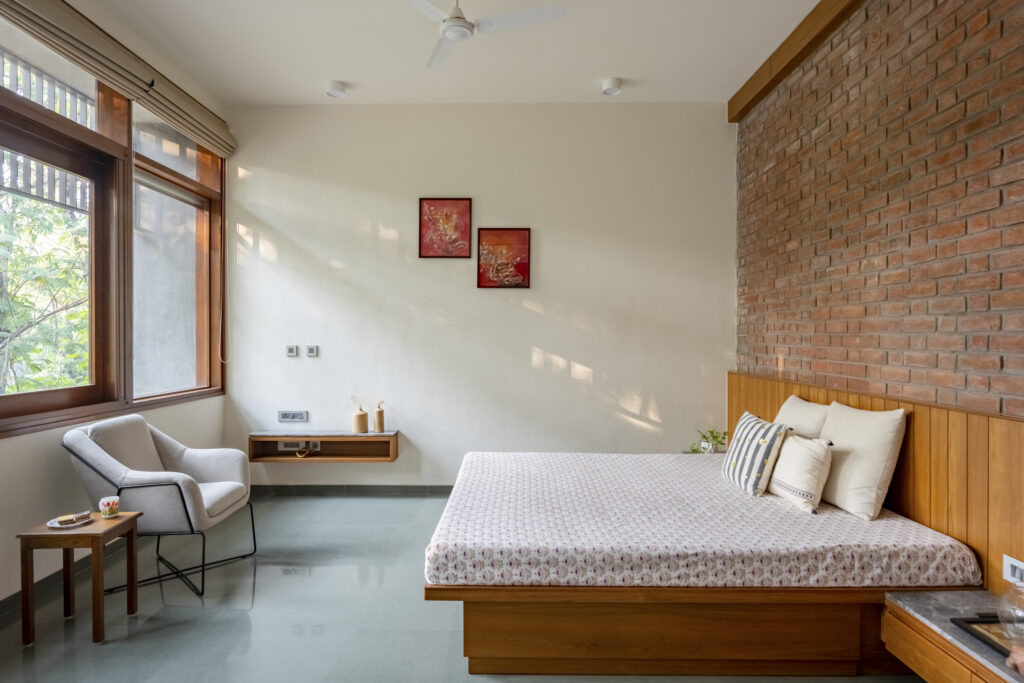




Project Details:
Studio Name: Modo Designs
Principal architect: Arpan Shah
Project Architects: Kankshita Pandit, Ahana Shah
Area: 700 sq yds / 6300 sq ft
Year: May 2021
Typology: Residential
Location: Rancharda, Ahmedabad
Consultants:
Interior Designer: Megha Patel Vadodaria (PVDRS)
Structural consultant: Hitesh Rathi
MEP: Apoorva Parikh Consultants
PMC: JDES consultancy
Photography Credits: Vinay Panjwani
Finishes:
Internal flooring: Mirror finished Kota
Verandah flooring: River finished Kota stone
Courtyard flooring: Brick paving
First Floor Terrace: Terracotta Color Handmade Clay Tiles
Top Terrace: White Tiles
Door Window: Valsdi Wood
Parking area: Cobbles of Kota
Glass work: Laminated Glass
Wooden Color: P U Polish







One Response
Price please